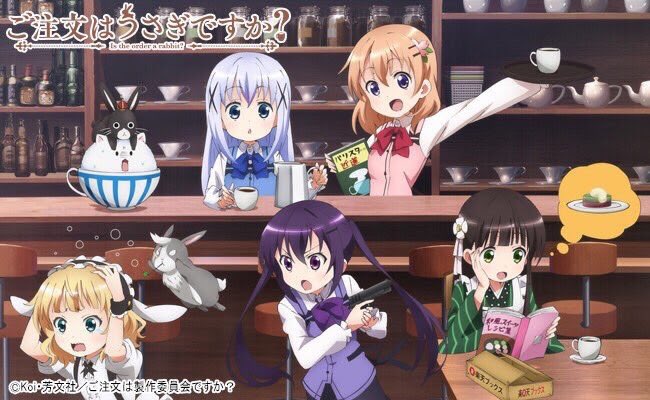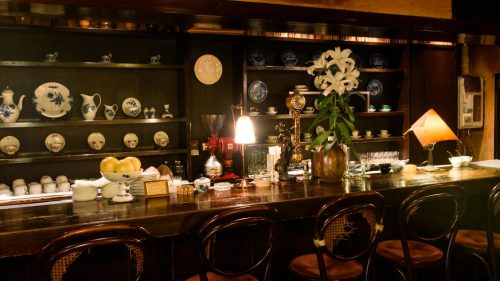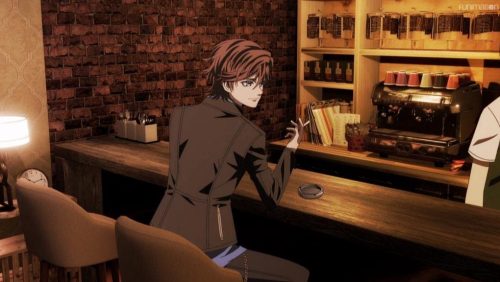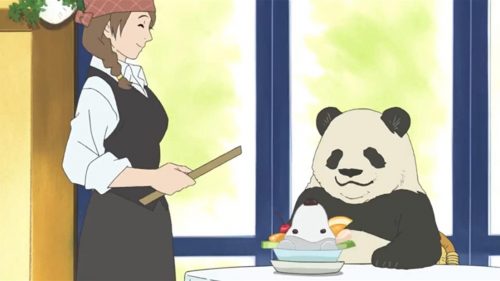
Coffee is one of the most universally drank beverages in the world, and getting a coffee with other people is a part of social life everywhere. While coffee may unite us as a species, many countries and peoples have their own special coffee culture, both traditional and modern. Japan is no different! While many people associate Japan with green tea and matcha first and foremost, Japan also has a rich coffee culture that dates all the way back to the time of samurai.
Today we are going not quite that far back, but to something that is still decades old in all corners of Japan — kissaten, traditional Japanese coffee houses. Kissaten have been a part of Japan’s coffee culture for a long time in the cities and even in small towns, and they’re still a part of the culture today. Plus, you can even see them in anime sometimes! We are going to have a look at both and learn a bit about kissaten culture in Japan, and where you can see it expressed in anime.
Real Kissaten

Kissaten, which translates to “tea-drinking shop,” started to pop up in Japan in the late 20th century. As cafes also spread throughout the country, kissaten evolved as an alternative to them. Whereas cafes also served alcohol and were a social place for people to talk and be noisy, kissaten were meant for quiet gatherings and intellectual discussion. While each kissaten is unique and has its own special design and menu, they do follow a similar aesthetic.
Kissaten are classy and often use upscale decor like mahogany wood, velvet seats, dark curtains, and brass or gold utensils and other kitchen appliances. Almost always, the staff wears a suit or other formal uniform with an apron. You won’t see many wild hairstyles, piercings, or tattoos like you may see other baristas sporting at more modern cafes, either. Another huge feature of kissaten are the cups used for coffee, which are often fine china with beautiful and intricate designs. The overall atmosphere is subdued, with jazz or classical music playing sometimes even on vinyl. A few kissaten even offer a “menu” of the music currently being played that day so you know what you’re listening to. Keeping to a more formal atmosphere, it’s not uncommon for kissaten to have a “no phones” rule; no pictures, no surfing the internet, no talking on the phone. That’s not why you’re meant to be there!
Across the board, kissaten take coffee very seriously. There are always a lot of different beans to choose from, most of which are single-origin, and all with their flavour profiles listed as well. Some kissaten serve food like pasta or Japanese curry, or small sandwiches, and almost all serve cake and toast. Often, the coffees have a certain food suggested to eat alongside them, much like upscale restaurants do with wine. The coffee is meticulously and carefully brewed and prepared for each customer, so visiting a kissaten is not a fast experience — and certainly not for take-away. Most kissaten are more expensive than, say, Starbucks — but you get what you pay for, as they say. The quality and service are always high.
Anime Kissaten

One of the most famous examples of kissaten in anime is in Tokyo Ghoul. Many of the main characters work in a kissaten called Cafe Anteiku. While ghouls cannot eat the same food as humans, they are able to drink black coffee, something that continues to connect the main character Ken Kaneki to his human friends. The characters are often seen at Cafe Anteiku, wearing the traditional apron and black suit that is synonymous with kissaten culture and preparing slow but delicious coffee. There are a lot of rumours online that Cafe Anteiku is based on a small kissaten in Shinjuku, Tokyo, actually, but no one can confirm exactly which one and speculation runs rampant.
Another older anime with a kissaten central to the plot Shirokuma Cafe (Polar Bear’s Cafe). It’s an anime literally about a kissaten with the twist that it’s operated by, well, a polar bear. And most of the frequent customers are penguins and other animals. It’s a great anime to see kissaten food and drinks, though, as the animation is very realistic and the dishes really look like what you can get at a real kissaten! They’re just often also cute and animal-themed, which isn’t so common, as kissaten usually have a serious atmosphere inside.

Gochuumon wa Usagi Desu ka? (Is the Order a Rabbit?) may not sound like an anime about kissaten from that wild title, but it actually is. The main character Cocoa Hoto originally enters Rabbit House expecting a rabbit cafe only to find that it's a kissaten! She ends up making a lot of friends at the kissaten and it remains a main setting in the story. Even just this past winter, the characters in the anime Scar on the Praeter often used a kissaten as their base of operations, making plans and holding important meetings there amongst the lavish decor that really stood out from the rest of the anime’s setting.
Final Thoughts

Kissaten are such an interesting part of Japan’s coffee scene. They’re a unique phenomenon that stands apart from the trendy, Western-style cafes that grow more popular every year. And luckily, despite the growth of other cafes, kissaten are alive and well. They can be found in hidden corners and alleys all over Japan, often with subtle signage and classy interiors. And you know if you go, you’re going to get a great cup of coffee (just try not to let the language barrier or atmosphere intimidate you too much!). Plus kissaten do make their appearance in anime, so keep your eyes open for them in the future! You can impress all your friends with your knowledge.
Have you ever been to a kissaten? Would you like to visit one someday? What’s your favourite kissaten in anime? Can you think of one we didn’t include? Let us know in the comments!

